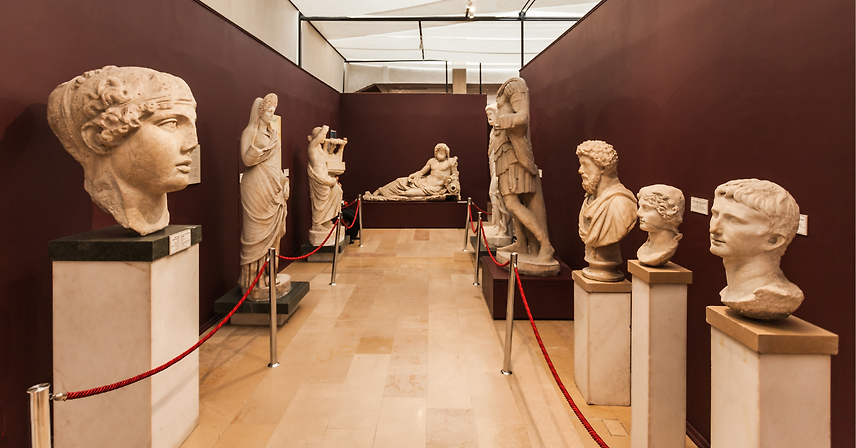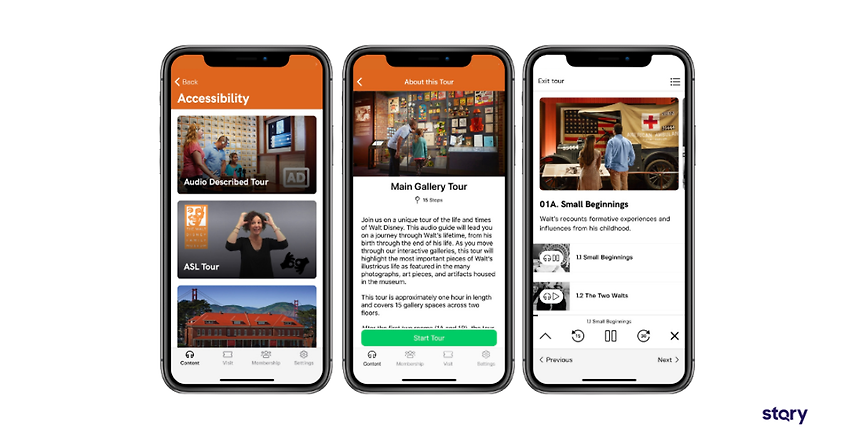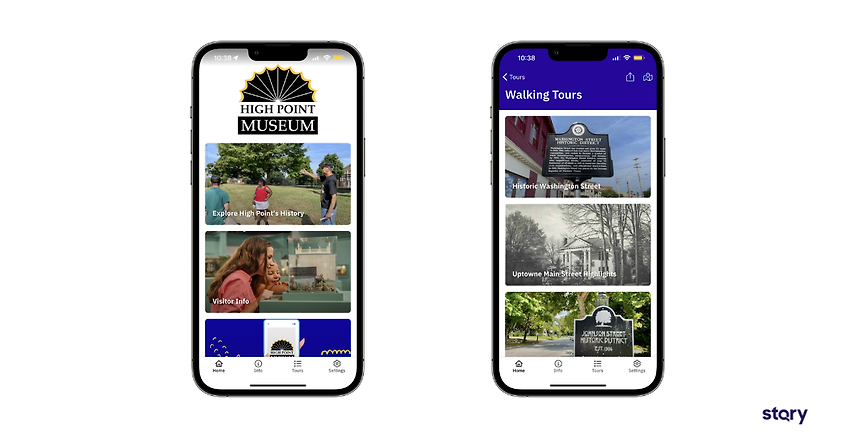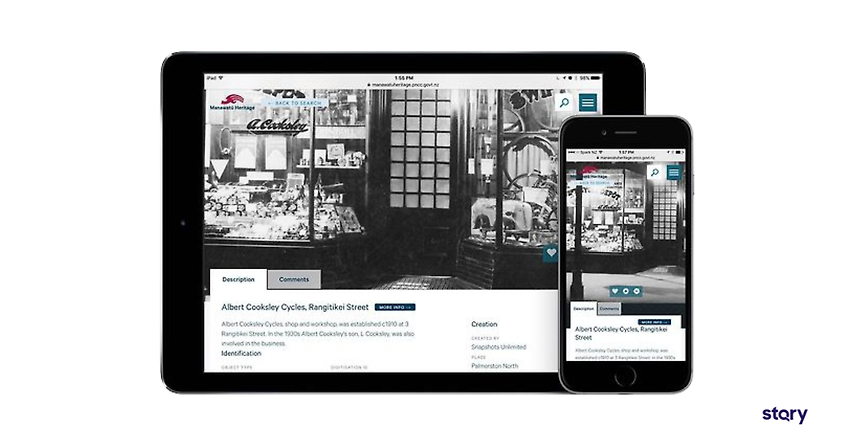
76% of all US leisure travelers visit museums or cultural heritage sites during their trips. These visits contribute $50 billion to the US economy each and every year.
During and after the worst of the Covid-19 pandemic, museums spent a higher-than-normal amount on technology in order to adapt to the public’s need for virtual experiences and to re-open safely.
Some museums are still working on creating visitor experiences that meet modern expectations. Meanwhile, others are looking to invest in digital experiences that go beyond safety in order to provide more meaningful content and achieve their goals for community impact.
No matter where you’re at—whether that’s implementing cloud-based tech for the first time or bending AR to your will—we’ve got insights into the top museum tech for 2025.
Take a look at the trends that will power museums next year and how you can make them your own.
1. Tech-Powered Accessibility
Ensuring digital content is perceivable, operable, understandable, and robust is a key part of meeting The Americans with Disabilities Act (ADA) compliance.
Under the ADA, websites and mobile apps are considered extensions of public services and accommodations. When digital content is inaccessible, it creates the same exclusion as physical barriers like stairs.
This is where thoughtful digital design becomes especially powerful. You can use multimedia content to satisfy the needs of more people. Audio content can assist the hearing impaired, while videos, images, and transcripts can help those with hearing impairments.
It’s also important to provide content in the languages that matter to your visitors. You can use digital museum displays and tour apps to provide multilanguage content that won’t clutter your physical displays.
For example, The Walt Disney Family Museum uses a STQRY-powered tour app to provide stories in multiple languages and formats. The app also includes a full American Sign Language (ASL) tour for visitors who are deaf or hard of hearing, and an audio guide for guests who are blind or have low vision.

Some museums are utilizing AI translation text to speed up the bulk of the translation work. However, if you use AI, it’s still important to bring in a translator or copyeditor to catch any mistakes. AI can be useful, but it’s not perfect. Think of it as part of the crew—you’re the captain, and it’s your job to steer the ship and make the final calls.
2. Immersive AR Experiences
Augment reality (AR) is one of the biggest technology trends for museums, because it offers the ability to create almost-realistic experiences that immerse visitors in the time period, art style, or content of your exhibit.
For example, The National Museum of Natural History in Paris, France created an augmented reality experience to bring extinct species back to life.
Another great example is SA National Parks Tours, a self-guided tour app that helps visitors explore South Australia’s parks and heritage sites.
One AR feature in the app lets users view a 3D model of Glenthorne House, a historic building that once hosted picnics, jubilees, and games like tug-of-war. Although the house burned down in 1932, the AR experience recreates its story and structure in vivid detail.
We can expect to see lots more exhibits utilizing AR in the coming years, especially ones targeting children and families.
3. Self-Guided Audio Tours
Self-guided audio tours let visitors explore museums and historical sites at their own pace using their personal devices.
These tours provide narrated content through a mobile app and often use geofencing technology, which automatically plays the right stories as visitors move through the space.
The use of audio tours have skyrocketed in the past couple of years, as more museums sought to:
- Do away with the hassle of audio device rentals
- Satisfy visitors who wanted to avoid group tours
- Allow visitors to use their own devices (for a more hygienic experience)
A great example of this is the High Point Museum. They worked with STQRY to create a mobile app that guides visitors through their historical park and nearby landmarks—even after hours. This helps them stay connected with the public without needing extra staff.

We can expect more museums to adopt this technology, as it becomes standard-practice to provide a digital tour alongside docents and group tours (as an option for when visitors would rather go it alone).
Museums that have already adopted this technology will seek to make better use of it in 2025. They might tell additional stories and measure their impact on the community, social stigmas, and issue awareness.
4. Interactive Digital Displays to Replace Physical Ones
Replacing physical displays with digital ones is an ongoing project. We can expect to see more museums using kiosk software and continuing to build out their digital experiences.
When replacing physical displays, it's not just a matter of making the content digital. This is your chance to reimagine the entire content experience, now that you have limitless potential. You might create interactive maps, scenes, or timelines that catch visitors’ attention.
You can also add quizzes to make learning more engaging, offer wayfinding tools to help visitors navigate, or gather feedback right from the screen. Interactive displays open the door to deeper engagement and smarter exhibits.
5. Cloud-Based Ticketing
A cloud-based ticketing system is one essential piece of museum software. It can bring your museum up to speed with modern expectations by providing paperless tickets, contactless entry, and timed entry slots.
The system also helps staff by automating sales, handling memberships, and providing real-time data on attendance. This data helps museums make smarter decisions about staffing and marketing.
The scalability of cloud solutions allows them to grow with the museum, while the vendor handles maintenance and security.
While most large museums already have such a solution in place, we can expect smaller organizations to adopt this technology as well.
6. QR Codes
QR codes eliminate the need to manually type in a website address, search for a product, or enter a long password. This makes it easy for people to get information instantly.
You might use QR codes in your cafe or restaurant to share the menu in a germ-free way. Or, you can add QR codes to your informational kiosks or signage to share the link to your museum app.
You might also encourage visitors to sign up for your email newsletter, purchase a membership online, or make a donation.
QR codes are cheap and easy to generate, and they can be customized with brand logos and colors. They can be used on everything from product packaging and business cards, making them a flexible tool for museums of all sizes.
7. Discoverable Collections Websites
Gone are the days of hidden, private collections. Today, more museums are jumping on the trend of making their collections more widely available. This way, they can attract additional visitors and patrons.
You can use a digital collections platform to create a beautiful website with images, videos, audio file, and text. Make sure to SEO optimize every item in your collection so that it can be easily found online.
With this technology, you can integrate your backend CMS with your public digital collections so that you don’t have to maintain separate systems or lose out on online traffic sources.
A great example of a great digital collections platform is that of Palmerston North Libraries in New Zealand.
Their team needed a better way to share their collections online as their old site was hard to use, not mobile-friendly, and didn’t show up on Google.
To solve this, they partnered with STQRY and launched a new website using STQRY Collect, a digital platform designed specifically for cultural and historical collections.
The result? A modern, user-friendly, and searchable online collection that’s accessible to a broader audience.

8. Hybrid Virtual Programming
Thousands of museums across the US rapidly deployed virtual experiences and programs during the pandemic. While people are craving in-person experiences now, there are still use cases for virtual programs. Overseas participants, students, and elderly or disabled people can all enjoy your programming virtually.
We expect to see more museums take a hybrid approach, where they’ll offer a virtual component of an in-person experience. For example, Senior Planet offers seniors the ability to come in-person to museum tours in New York or to tour them virtually.
Technology should never be pursued for its own sake. Instead, it should positively impact your visitor experience or your internal productivity. So consider recent complaints or suggestions from visitors and staff to help you decide which technology is right for your museum.
Create Amazing Digital Experiences for STQRY
With the right tools, you can make your exhibits more engaging, inclusive, and accessible. STQRY gives you everything you need to create seamless, self-guided experiences across mobile, kiosk, and web platforms.
STQRY Apps make it easy to build self-guided mobile tours—no coding required. These tours work offline and offer custom content so visitors can explore at their own pace.
To enhance the experience inside your space, STQRY Kiosks provide interactive access to exhibit information and allow you to gather feedback with quick built-in surveys.
STQRY Collect helps you bring your collections online, making them accessible from anywhere and inspiring virtual guests to visit your museum in person.
Ready to build your own digital experience?